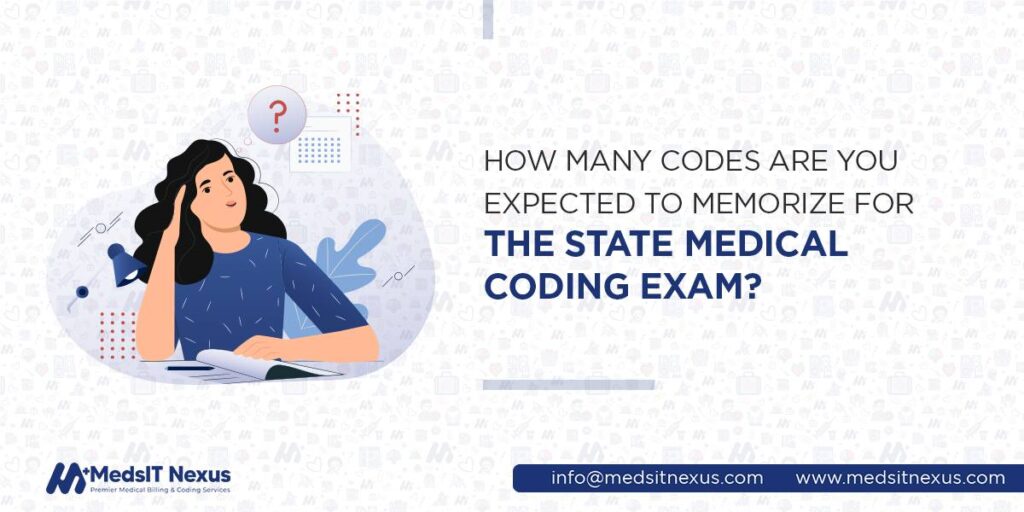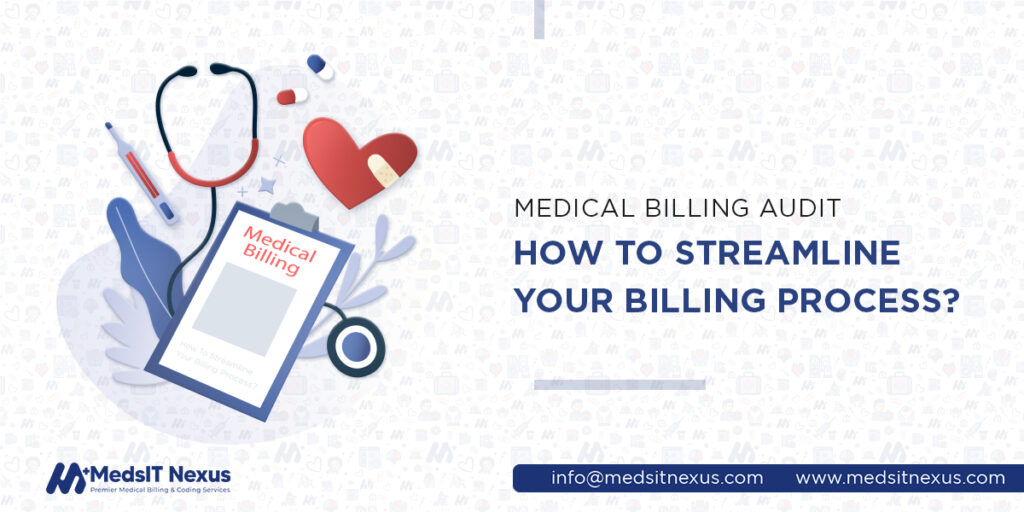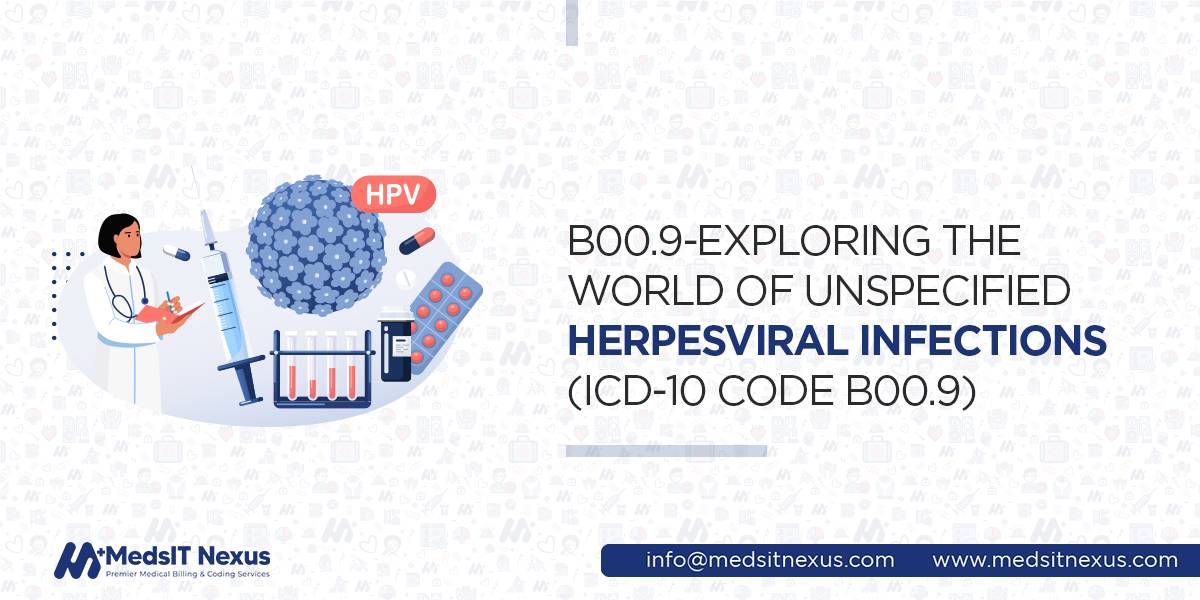How many codes are you expected to memorize for the state medical coding exam?

The effectiveness of the healthcare finance system depends on accurate billing and coding. Individuals
participating in revenue cycle management are responsible for using their expertise to remove any
obstacles to greater reimbursement, including accuracy, transparency, efficiency, and coding rule
compliance. Thus, medical organizations ensure that potential employees comprehend medical terms and
relevant codes and have certifications before recruiting them for financing positions so that each step
of revenue management will be done without any error on time. Moreover, certified professional coders
and billers have the expertise to save physicians, patients, and insurers from ambiguity and expensive
mistakes.
As far as the coding exam is concerned, coding certification will be gained by taking and passing these
coding exams. This guide will compile all the data regarding codes and courses required to memorize to
take and pass the state medical coding exam.
Medical coding certifications
If you have just begun coding, then you probably be preparing for one of the below entry-level certified exams:
- Professional certified coder (CPC)
- Certified medical coder (CMC)
- Certified coding specialist (CCS)
And if you have achieved any of these certificates, you must be considering specializing in one of the following:
- Certified inpatient coder (CIC)
- Certified outpatient coder (COC)
- Certified risk adjustment coder (CRC)
- Certified professional coder-payer (CPC-P)
Types of code sets
Medical coders may have to review a patient’s medical records to ensure that all necessary information is included and accurately coded. This may involve asking the patient questions about their medical history or treatment. It may also include their personal information such as their name, number, date of birth, address, etc.
Current procedural terminology (CPT) codes
This medical coding system aids in identifying operations, including office visits, physical
examinations, flu shots, and more. To maintain efficiency, this might assist a medical organization in
managing patient services, fees, and demands.
They are five digits codes that can either be alphanumeric or numeric.
Types of CPT
- Category I:They range from 00100–99499, and descriptors of this category represent services or procedures.
- Category II:These supplementary alphanumeric tracking codes are employed for performance evaluation.
- Category III:These alphanumeric codes are used for cutting-edge techniques, operations, and services.
- PLA codes:These newly introduced CPT codes reflect exclusive clinical laboratory analyses.
ICD-10 codes from the international statistical classification of diseases and related health problems (ICD-10) codes
These codes are used to identify illnesses, complaints, abnormal findings such as disorders of the nervous or digestive systems, difficulties during pregnancy, and more.
ICD-10 replaced a 30-year-old ICD-9, providing additional patient information and updated terms
ICD-9-CM has been the standard for assigning codes to medical diagnoses and illnesses. It has to be updated entirely because it is outdated. ICD-10 was developed and used globally by the World Health Organization (WHO), which is in charge of these codes. The United States has implemented and embraced improvements that are tailored to the requirements of the country’s medical system. As a result, any program you enroll in to study medical coding must also guide you on how to apply for ICD-10-CM.
There are two code sets ICD-10-CM and ICD-10-PCS:
ICD-10 has Approximately 68,000 Diagnosis Codes, and of course, it is a massive number to remember. Thankfully, the ICD-10 has two distinct code sets in the United States, so medical coders are not supposed to know all 68,000 codes.
ICD-10-CM:
- All healthcare facilities must code using the ICD-10-CM. The U.S. Department of Health and Human Services has demanded that ICD-10-CM codes be used by all organizations insured by the Health Insurance Portability and Accountability Act.
- ICD-10-CM codes range from three to seven numbers.
ICD-10-PCS:
- ICD-10-PCS is only appropriate for implementation in inpatient hospital settings.
- ICD-10-PCS codes now employ seven characters.
Healthcare common procedure coding system (HCPCS) Level II codes
These codes describe non-physician operations, including ambulance transportation, equipment, and commodities like prostheses and durable medical equipment.
Structure of AAPC CPC examination
The AAPC coding exam comprises 150 multiple-choice questions, covering approximately 17 sections of the medical field and health, allowing you 5 hours and 40 minutes to complete the exam.
10,000 series CPT codes
There will be at least 6-10 queries regarding surgical procedures on the integumentary system
20,000 series CPT codes
You can expect 6-10 questions from surgical methods on the musculoskeletal system.
30,000 series CPT codes-
You have to answer 6-10 questions on the surgical procedure done on
- CVS
- Respiratory system
- Mediastinum and diaphragm
- Hemic & lymphatic system.
40,000 series CPT codes
6 questions will be related to surgical procedures of the digestive system that entails: Mouth, Lips, Rectum, Palate, Salivary, glands, Intestine, Appendix, Esophagus, Stomach, Liver, Anus, Pancreas, Biliary tract, Abdomen, Omentum, Periosteum
50,000 series CPT codes
You have to deal with ten questions on surgical procedures executed on the following systems:
- Male and female reproductive system
- urinary system
- endocrine system
- Maternity and delivery system.
60,000 series CPT codes
You might encounter 6-10 questions regarding surgical procedures on CNS.
70,000 series CPT codes
Deal 6-10 questions on radiology explicitly, including : Oncology, Mammography, Ultrasound, Diagnostic Radiology, Bones and joints, Nuclear medicine
ICD-10-CM
Around 10 MCQs will be concerned on: ICD-10 official guidelines for coding and reporting, Diagnosis questions
Evaluation and management
MCQs will come from the topic of compliance, so you are supposed to prepare the following: HIPAA rules, Services covered under parts A, B, C, and D of Medicare, Relative value units, National coverage determination or Local coverage determination, National correct coding initiative edits, Advanced beneficiary notice of non-coverage, How to find out and report fraudulent, How to implement code to payment policies.
HCPCS level II
Approximately five questions will focus on the following: 2-digit codes that modify other procedures, Equipment, supplies, and Services for Medicare patients.
Laboratory pathology
You will find some questions that will comprise these topics:
Anesthesia
This segment will contain questions regarding the following: Reporting, Physical status modifier, Anesthesia for diagnostic, surgical & obstetric services
Medical terminology
Minimum 8 MCQs will be present on medical terms and terminologies of human systems.
Coding guidelines
6 questions will comprise: CPT coding guidelines and notes, Official guidelines on ICD-10 coding and reporting.
Medicine
You will have to answer ten questions regarding knowledge of topics of medicine such as Dialysis, Moderate sedation, Patient education and training, Non-face-to-face non-physician services, Medical nutrition, Chemotherapy administration, Physical medicine & rehabilitation, Endocrinology, Immunization, Biofeedback, Photodynamic therapy, Hydration, CNS assessment, Allergy and Immunology.
Compliance and regulation
MCQs will come from the topic of compliance, so you are supposed to prepare the following: HIPAA rules, Services covered under parts A, B, C, and D of Medicare, Relative value units, National coverage determination or Local coverage determination, National correct coding initiative edits, Advanced beneficiary notice of non-coverage, How to find out and report fraudulent, How to implement code to payment policies.
Anatomy
8 questions related to the structures of the human body will be included
Samuel White, MBA-HC, CPAR -
Lead Author & Senior Healthcare Revenue Cycle Strategist at MedsIT Nexus
Leads editorial process for the publication of Technical RCM guides, reimbursement optimization case studies, and compliance-focused research content, expert evaluations of RCM software and medical billing solutions.






